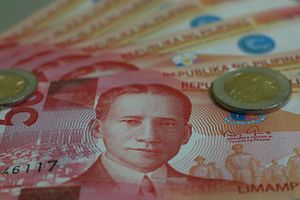In September, the Philippine House of Representatives passed the proposed 2022 national budget. It clocks in at a record 5.024 trillion Philippine pesos (approximately $100 billion at current exchange rates) and will be the final budget of the Duterte presidency. The budget is currently being debated in the Senate where, as reported by Reuters, it will face some additional scrutiny since the upper house of Congress “has been holding an investigation into the government’s use of pandemic funds.” Nevertheless, it will likely be passed shortly.
This budget represents an 11.5 percent increase over 2021 spending levels, and is expected to account for 22.8 percent of GDP, which represents a sizable outlay. What does the budget, and the assumptions that it is built on, tell us about the thinking of policymakers in the Philippines?
The first point is that they expect economic growth in 2022 to be robust, with GDP growing between 7 to 9 percent. I don’t know if the economy is really going to grow at that clip, and neither do they. But the other important assumption is that they’ve allowed room for plenty of borrowing to make up the difference.
The Department of Budget Management is projecting the national government’s fiscal deficit in 2022 will be 1.665 trillion pesos, which is 7.5 percent of GDP – and they are planning on that deficit even under assumptions of quite rapid economic growth. This tells us that they feel somewhat comfortable running big deficits and financing them through debt, at least in the short term. It’s similar to the fiscal attitude adopted by Indonesia in its 2022 budget, and quite different from that of Thailand which is seeking to reduce government spending, deficits, and borrowings as soon as possible.
This is evidence of a willingness to tolerate high debt levels for the near term. Outstanding government debt ballooned from 8.2 trillion pesos in 2019 to 10.2 trillion pesos in 2020 as the state ran big deficits to battle the pandemic. Through the first three quarters of 2021, government debt has increased again to 11.9 trillion pesos. Even without knowing the final numbers for 2021, the government is planning to borrow yet another 7.5 percent of GDP in 2022 to finance public expenditures. That shows clear evidence to me that Philippine policymakers are not living in fear of capital markets punishing them for over-borrowing. They obviously feel it is more important at this time to stimulate the economy with counter-cyclical public spending.
One reason why the Philippines might feel comfortable running deficits right now is because, unlike Thailand, its current account swung into surplus during the pandemic. The trade deficit narrowed and overseas remittances from Filipinos abroad have remained steady, which means going into 2022 the current account looks stronger than it did before the pandemic started. This gives Manila some latitude to run deficits, because a current account surplus generally means lower borrowing costs. The Department of Budget Management projects that in 2022 they will continue running a surplus equal to 1.5 percent of GDP, and that foreign exchange reserves will increase to $117 billion.
This is part of why the 2022 budget anticipates the cost of debt servicing will decrease even as expenditures and total debt levels increase – for the time being, borrowing costs are expected to be manageable. That might not last forever though (especially if the U.S. Federal Reserve raises interest rates soon), which is why it is crucial that for however long the Philippines is borrowing to run these deficits, policymakers spend it on things that really count. A lot of spending in 2022 is being blocked out for infrastructure and education, while health and other social services have arguably not received as much resources as some might wish. Those are the issues that will ultimately be hashed out in the Senate before final passage.
But for now, the key point is that in 2022 this government is going to try to spend its way out of any lingering economic headwinds from the pandemic, and it is not afraid to run deficits and take on debt to do so. This newfound tolerance for debt might fade pretty fast if the current account flips back to deficit and borrowing costs go up, and I am sure that is something policymakers in the Philippines will be watching very closely in the months and years to come.

































